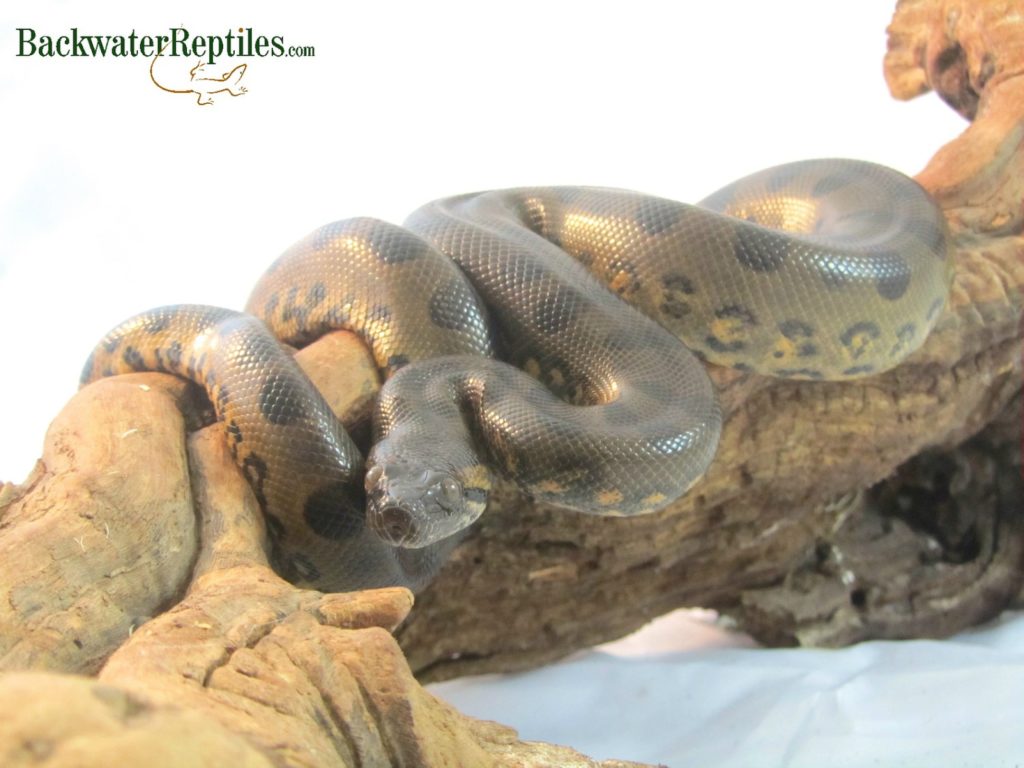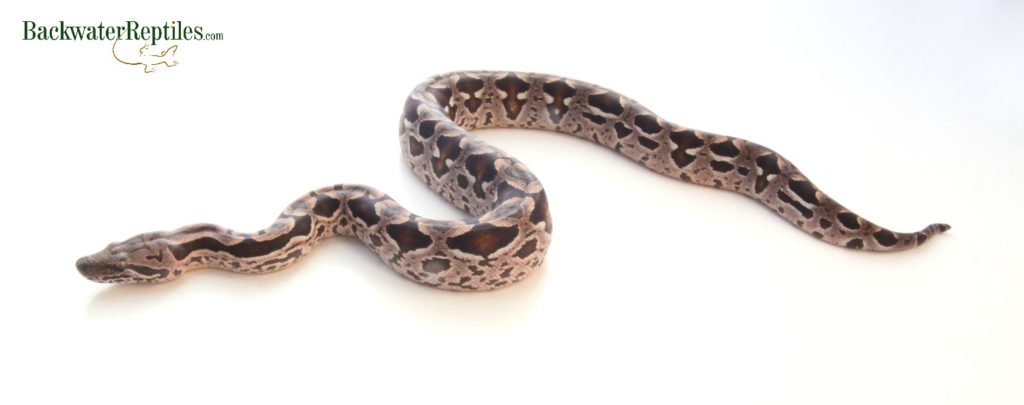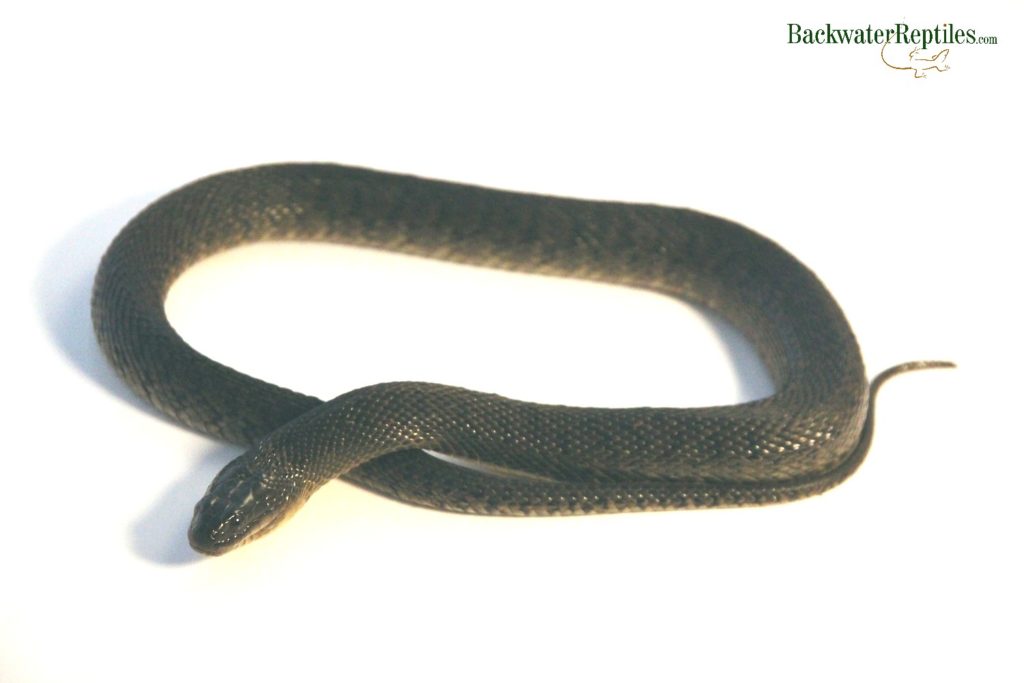Even if you’ve never owned a pet snake or seen one up close in real life, we bet you’re aware that snakes can swallow food that is much larger than their head in a single bite. How cool is that? But, how do snakes eat other animals?
As humans, we not only cut up our food into manageable portions, we also chew it until it is the proper consistency to be swallowed. It’s hard to imagine trying to swallow an entire cow or even an entire carrot whole, but that’s what snakes do.
How do snakes eat?
So, how are snakes able to eat this way without choking? What unique adaptations do they possess that allow them to eat so efficiently? Well, if you’re curious about this topic at all, you’ve come to the right place.
In this article, we’ll cover topics from how a snake’s jaw is built to other special traits they have in order to be such powerhouse eating machines.

What do wild snakes eat?
As is the case with many wild animals, snakes are opportunistic eaters and usually will eat a variety of food based on what types of prey can be found in their vicinity. Keep in mind that all snakes are carnivores though, so there are no species that eat plants or vegetable matter.
Most mid-size snakes will eat small vertebrates, usually mammals. Ground-dwelling rodents such as mice, shrews, voles, rats, and even moles are all excellent meals for snakes in the wild. However, mid-size snakes are also not afraid to indulge in appropriately-sized vertebrates such as frogs, toads, small birds, and even other snakes!
Larger snakes can obviously eat larger food. North American species that don’t grow to extremely large sizes will eat chickens, lizards, rabbits, and other large rodents.
Some of the larger snake species (i.e. boas, pythons, and anacondas) can eat large game animals such as deer, boar, and even goats. However, this is usually reserved for jungle-dwelling species that eat wild game animals.

We’ve covered what large snakes eat in the wild. But, what do tiny snakes such as ringneck snakes and blind snakes eat in the wild? What prey items are small enough for these nearly earthworm-sized reptiles to consume?
Well, many will eat small invertebrates in place of vertebrates. Small insects like cockroaches, crickets, and even worms are all on the menu for these itty bitty snake species.
Notice anything in particular about this list of prey items? All of them are listed as “prey” and not “food.” This is because snakes actually won’t eat dead matter. They will only eat living food, or in the case of snakes we keep as pets, food that they perceive to be living prey.
How does a snake’s jaw work?
The jaw of a snake is very different from the jaw on mammals and other reptiles such as lizards and tortoises. Most mammals and reptiles that are not snakes have a skull and a lower jaw bone called a mandible.
These two main bones are generally fused together and unable to perform too broad of a range of movement other than opening and closing and perhaps a little shifting from side to side.
Snakes have jaws that are much more flexible and capable of a broad range of movement. This is because instead of two pieces that are fused together, the jaws of a snake are comprised of three pieces that are held together by much more flexible tendons, muscles, and ligaments.
Snakes have a top skull bone and two bottom jaw pieces that are actually not fused together at the chin. Instead, these two bottom jaw pieces are held together by muscle allowing each side of the jaw to move independently of each other.
Getting into the nitty gritty anatomy of a snake’s jaw, the upper bone and lower bones are connected via the quadrate bone. This special bone behaves like a hinge and allows for the snake’s jaw to open 150 degrees!
This means that any snake can open its mouth to swallow food that for all intents and purposes appears too large for it to eat.

One myth that we’d like to clear up regarding a snake’s jaw bones is that a snake’s jaw can actually come unhinged or detached. This is not true. Snakes don’t detach their jaw bones on command.
As we’ve already discussed, they simply have special adaptations that make their jaws extremely flexible and this makes it appear that the jaw detaches.
If you’ve ever witnessed a snake eating, you’ll know that although you’d think it would be a very slow and tedious process, most snakes eat very quickly and will consume their prey in under five minutes.
This is because once the jaws have opened over the prey, the snake’s curved teeth grab the prey and make sure it doesn’t slip forward and out of the snake’s wide open mouth.
The snake then secretes a lot of saliva and lubricates the food while “walking” its jaws forward over the prey one side at a time. The digestive muscles then take over the remainder of the process and push the food further down the digestive tract and proper digestion begins.
How do snakes catch their prey?
If snakes have no arms, legs, or even claws of any sort to catch prey, how then do they capture food to eat? What special abilities do they have to make up for their lack of arms and legs?
As we’re sure you’re aware, some species of snakes are venomous. They have long, hollow, front fangs that grab prey and inject them with venom that allows the snake to eat the prey item at its leisure.
Examples of venomous snakes that most Americans are familiar with are vipers, coral snakes, and rattle snakes.
Did you know that each species of snake actually possesses its own special venom type? The effects of the venom can vary by species, but there are three main types – neurotoxins, cardiotoxins, and hemotoxins.
Neurotoxins affect the nervous system and generally cause respiratory function to cease. Cardiotoxins affect the prey’s heart, causing the muscles to deteriorate and eventually make the heart stop beating.
Hemotoxins cause blood vessels to rupture which results in widespread internal bleeding.

When a venomous snake is not biting something, its hollow fangs fold back into the snake’s mouth. This is because if the fangs didn’t lie flat, the snake would either be incapable of closing its mouth or its teeth would puncture through the bottom of its own face.
Most other non-venomous snakes are constrictors, meaning that once they lunge and grab their prey, they begin to squeeze the animal until it has suffocated to death allowing the snake to eat freely. Each time the prey inhales, the snake’s coils tighten and the prey is unable to take another breath.
So, whether the snake injects venom or squeezes its food to death, it’s clear that lacking limbs poses no problems for these reptiles when it comes to grabbing a meal.
How should I feed my snake in captivity?
Snakes are usually not hard to feed in captivity. Most smaller species will happily eat mice their entire life, while the larger constrictor species will eventually move onto rats.
If you’re squeamish about feeding a living rodent to your pet snake, luckily most snakes will eat pre-killed frozen rodents. All you need to do is keep the frozen rodent in your freezer until it’s meal time for your snake and then you de-thaw it.
We usually allow our frozen mice to thaw in warm water, but you can also just allow them to sit out until they’ve completely thawed. Just be sure to NEVER put a frozen rodent in the microwave!
You will have disastrous and rather messy results and end up with a snake that goes hungry.
Sometimes, snakes can be picky eaters. This is usually only true of the ones that are wild-caught. Captive bred snakes will generally accept frozen/thawed rodents with no issue.
If you do end up with a picky eater, you can certainly feed it living rodents. Pet stores sell feeder mice specifically for this very reason. There will be a few extra steps to the feeding process though.
First of all, we don’t recommend throwing a live mouse in with your snake in its normal enclosure. No matter if you’re feeding a live rodent or a frozen one to your snake, we highly recommend transferring your snake to a new enclosure for the feeding process.
This helps your snake to associate being moved to a specific area with feeding time and helps develop a schedule. It also trains your snake to recognize that not every time the cage opens means feeding time and will help minimize accidental striking and biting.
So, the first step when feeding a live rodent is to transfer your snake to a separate feeding container. Once you’ve done this, we recommend stunning your live rodent. This process is certainly not for the faint hearted.
There are many ways to stun a rodent, but many snake owners will strike the mouse against a hard surface to knock it unconscious. The rodent should be stunned because like any animal, it will fight for its life and this means that if your snake doesn’t consume the rodent immediately, the rodent could actually gnaw on your snake and inflict wounds that will get infected.
If you are simply unable to stun your snake’s dinner, then always stick around for the entire feeding process and make sure that the mouse or rat is not injuring the snake in any way.
If your snake turns out to not have an appetite, which can happen often if the snake is preparing to shed, then always remove the rodent from the enclosure and return your snake to its normal enclosure. Never leave the rodent around assuming the snake will eventually eat it.
There are also specific species of snakes such as egg eating snakes, water snakes, and tiny snakes like ringneck snakes that don’t eat mice. Obviously, egg eating snakes eat eggs.
They’re specialized eaters and won’t eat rodents no matter how hungry they are. Water snakes might eat rodents, but usually they eat small reptiles and amphibians in the wild, so we recommend offering feeder frogs and even feeder fish.

If you ever happen to end up with a snake that proves to be a troublesome eater, we actually wrote an entire blog article dedicated to offering tips and tricks to get them to eat. You can find that particular article here.
Conclusion – How do snakes eat?
Snakes are fascinating reptiles and watching your pet snake eat is usually quite a spectacle. Most snake owners genuinely enjoy observing the feeding process and it’s a huge reason many reptile hobbyists choose to care for snakes.
We hope that this “How do snakes eat?” article has taught you some things about how snakes have evolved to be able to eat food that is much larger than their own head. We think it’s a really cool adaptation and we never grow tired of feeding the snakes we keep at Backwater Reptiles.
